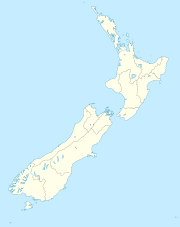Glasgow Range facts for kids
The Glasgow Range is a mountain range located on the northern West Coast of New Zealand's South Island. It sits north of the Papahaua Range. The most important river in this area is the Mōkihinui River.
History of the Glasgow Range
Not many people live in the Glasgow Range itself. However, you can find small towns like Mokihinui and Seddonville closer to the Tasman Sea coastline. These towns are in the foothills of the range.
In the 1890s, coal was discovered in the area. This led to the building of the Seddonville Branch railway. This railway helped transport the coal out of the region. However, coal mining activity started to slow down in the 1970s. Because of this, the railway line closed beyond Ngakawau on 3 May 1981.
Climate and Landscape
The soil in the Glasgow Range is mostly made of granite. This type of soil is not very good for farming or growing many plants.
The weather here is cool, wet, and often cloudy. The area gets a lot of rain, usually between 5,600 and 6,400 millimetres each year. Most of this rain is brought by winds coming from the west. It doesn't dry out quickly, and snow is common during the winter months.
Wildlife of the Glasgow Range
The Glasgow Range is home to some interesting animals. A very rare type of mollusc called Powelliphanta lignaria rotella lives only on the western slopes of the range. You can find it specifically in the Seddonville area. This special mollusc is considered nationally endangered, meaning it is at risk of disappearing.
You can also find goats living throughout the range. In the past, there were many red deer here. However, their numbers went down because of helicopter hunting. This type of hunting became very popular in the 1970s.


